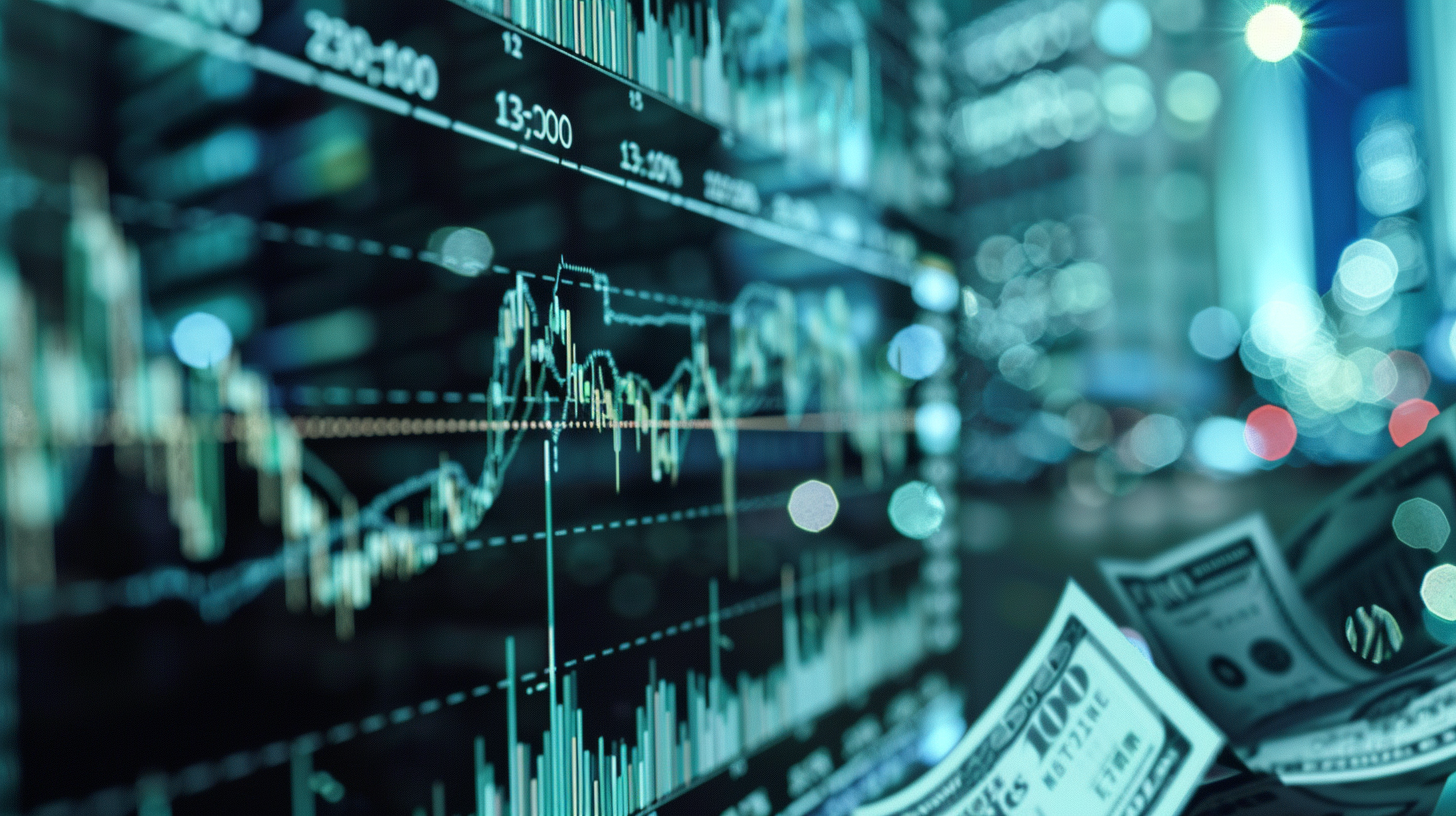Data Defenders: The Fight Against Financial Crime in the Digital Age
9 min read
The Digital Detective: How Data Analytics Is Revolutionizing Crime Fighting in Finance
 In the financial industry, where vast sums of money are moved across the globe at lightning speed, the specter of financial crime looms large. Financial institutions face relentless threats from money laundering, fraud, cyber-attacks, and other financial crimes that not only endanger their operations but also their reputation and the trust of their customers. In this high-stakes environment, data analytics emerges as a crucial ally in the battle against financial crime, offering powerful tools for detection, prevention, and compliance.
In the financial industry, where vast sums of money are moved across the globe at lightning speed, the specter of financial crime looms large. Financial institutions face relentless threats from money laundering, fraud, cyber-attacks, and other financial crimes that not only endanger their operations but also their reputation and the trust of their customers. In this high-stakes environment, data analytics emerges as a crucial ally in the battle against financial crime, offering powerful tools for detection, prevention, and compliance.
Understanding Financial Crime
Diving into the murky waters of financial crime is like peeling back the layers of an onion, revealing a complex world of deceit that spans from the petty swindler to the high-tech hacker. This shadowy realm includes a laundry list of nefarious deeds such as money laundering, fraud, insider trading, and the digital-age favorite: cyber theft. The stakes? Nothing less than the potential to shake the very foundations of our financial markets, fuel terrorism, and support a gamut of illegal activities that read like a crime novel. In today’s hyper-connected, digital-first world, these financial villains have upgraded their toolkits. They’re now leveraging the internet’s labyrinthine expanses to orchestrate schemes that are not just more sophisticated, but also incredibly elusive, turning the task of catching them into something resembling a high-stakes game of digital hide-and-seek.
The Evolution of Data Analytics in Finance
The advent of big data and advanced analytics technologies has transformed the financial landscape, enabling institutions to harness vast amounts of data for insights and decision-making. Data analytics in the context of financial crime prevention involves the systematic analysis of transactions, customer behavior, and other relevant data to identify patterns, trends, and anomalies indicative of illicit activity.
The narrative of data analytics in finance is a fascinating evolution from rudimentary bookkeeping to harnessing the power of cutting-edge technologies for crime detection and prevention. This journey underscores the finance sector’s adaptability and its relentless pursuit of integrity and security amidst the growing sophistication of financial crimes.
The Genesis: Bookkeeping and the First Strides towards Analytics
 In its infancy, data analytics in finance was synonymous with meticulous bookkeeping—a practice dating back centuries, aimed at ensuring accuracy in financial records. This era of descriptive analytics provided a foundational understanding of financial activities, albeit with a backward-looking focus.
In its infancy, data analytics in finance was synonymous with meticulous bookkeeping—a practice dating back centuries, aimed at ensuring accuracy in financial records. This era of descriptive analytics provided a foundational understanding of financial activities, albeit with a backward-looking focus.
Entering the Digital Era: The Role of Computers
The integration of computers into finance during the mid-20th century marked a pivotal shift. This period introduced electronic data processing, setting the stage for statistical models that could analyze financial data for trends and anomalies. Initially, these efforts were more aligned with market analysis than crime detection.
The Digital Revolution and the Dawn of Financial Crime Detection
The 1990s heralded a digital revolution, characterized by the explosion of online banking and electronic transactions. This surge in digital financial activity brought with it an increased risk of financial crime, prompting institutions to explore data analytics as a tool for detection. It was during this era that the finance sector began to employ analytics for spotting irregularities indicative of fraud or money laundering.
This exploration into analytics marked a pivotal transformation in how financial institutions approached security; it was no longer about just safeguarding physical vaults but also about protecting digital assets and transactions from cyber threats. As financial services expanded their digital footprint, the necessity for robust, data-driven defense mechanisms became clear, setting the stage for the advanced analytics and machine learning tools that are in use today.
Detecting Financial Crime with Data Analytics
 Data analytics tools leverage machine learning algorithms and statistical methods to sift through millions of transactions in real-time, flagging those that deviate from established norms or match known patterns of financial crime. This proactive approach allows financial institutions to quickly identify potential threats and take corrective action before significant damage is done. For example, a sudden spike in high-value transactions in a low-activity account could trigger an alert for further investigation.
Data analytics tools leverage machine learning algorithms and statistical methods to sift through millions of transactions in real-time, flagging those that deviate from established norms or match known patterns of financial crime. This proactive approach allows financial institutions to quickly identify potential threats and take corrective action before significant damage is done. For example, a sudden spike in high-value transactions in a low-activity account could trigger an alert for further investigation.
Data analytics has become a cornerstone in the battle against financial crime, offering the ability to sift through vast amounts of transaction data to identify patterns and anomalies that suggest fraudulent activity. By employing sophisticated algorithms and machine learning models, financial institutions can detect irregularities in real-time, such as unusually large transactions or rapid movements of funds across accounts, which could indicate money laundering or embezzlement. This proactive approach not only helps in the immediate identification of suspicious activities but also in the swift action to mitigate potential damage.
Moreover, the evolution of data analytics has enabled the development of predictive models that forecast future trends and potential threats based on historical data. These models are invaluable for regulatory compliance, as they can flag transactions that may not be immediately obvious as fraudulent but exhibit characteristics similar to past crimes. As a result, institutions can preemptively address vulnerabilities, ensuring a robust defense mechanism is in place against evolving financial crimes.
A Notable Historical Example: The Detection of the Enron Scandal
A landmark moment in the history of financial crime detection through data analytics was the uncovering of the Enron scandal in the early 2000s. Analysts and investigators utilized sophisticated data analysis techniques to sift through Enron’s complex financial records, uncovering a web of fraudulent practices designed to hide the company’s financial instability. This case underscored the potential of data analytics not just for understanding financial transactions but for exposing deceit and malfeasance.
The Age of Predictive Analytics and Machine Learning
The advent of the 21st century marked the transition from merely detecting to predicting financial crimes. With the introduction of machine learning and big data technologies, financial institutions could now analyze extensive datasets in real-time, identifying patterns that precede criminal activities. These predictive models represented a paradigm shift, offering a glimpse into potential future crimes and enabling preemptive action.
Predictive analytics and machine learning have revolutionized the way financial institutions approach the prevention of financial crime. These technologies enable the analysis of patterns and trends from vast datasets, predicting future fraudulent activities with a high degree of accuracy.
The integration of machine learning models into financial systems has allowed for the continuous learning and adaptation to new methods of financial crime. By analyzing historical transactions and behaviors, these models can identify subtle anomalies that may indicate sophisticated fraud schemes or emerging threats. This ability not only enhances the detection of financial crimes but also significantly reduces false positives, improving the efficiency of investigative resources. As these technologies evolve, they promise to become even more integral to the financial industry’s ongoing fight against crime, offering a dynamic and formidable barrier to those seeking to exploit financial systems.
Looking Forward: The Continued Evolution of Data Analytics
As we look to the future, the role of data analytics in detecting and preventing financial crime continues to evolve, driven by technological advancements and the ingenuity of financial professionals. The historical journey from simple bookkeeping to AI and blockchain illustrates a sector that is increasingly capable of not just reacting to financial crime but anticipating and nullifying it before it occurs. This progression is a testament to the finance industry’s commitment to safeguarding assets and maintaining trust in an ever-complex financial landscape
In recent years, artificial intelligence (AI) and blockchain technology have significantly bolstered the finance sector’s capabilities in fighting financial crime. AI’s learning algorithms have become adept at detecting complex and subtle patterns of illicit behavior, offering a level of precision and speed previously unattainable. Meanwhile, blockchain’s transparent and immutable record-keeping presents a formidable barrier to transactional fraud, enhancing the sector’s resilience against criminal exploits.
Preventing Financial Crime Through Predictive Analytics
 Beyond detection, data analytics plays a crucial role in preventing financial crime by predicting future risks and vulnerabilities. Predictive analytics models can forecast potential criminal behavior based on historical data and emerging trends, enabling institutions to strengthen their defenses in high-risk areas. By understanding where vulnerabilities may lie, financial institutions can implement targeted controls, such as enhanced due diligence for certain transactions or customers, thereby mitigating the risk of financial crime.
Beyond detection, data analytics plays a crucial role in preventing financial crime by predicting future risks and vulnerabilities. Predictive analytics models can forecast potential criminal behavior based on historical data and emerging trends, enabling institutions to strengthen their defenses in high-risk areas. By understanding where vulnerabilities may lie, financial institutions can implement targeted controls, such as enhanced due diligence for certain transactions or customers, thereby mitigating the risk of financial crime.
The sophistication of predictive analytics allows for a more proactive stance in the fight against financial crime. By leveraging advanced algorithms and machine learning techniques, these models can sift through the noise of daily financial transactions to pinpoint patterns and behaviors that suggest a high risk of illicit activity. This forward-looking approach not only helps in preemptively identifying potential threats but also aids in the allocation of resources to areas of greatest vulnerability, ensuring that protective measures are both efficient and effective. Furthermore, by continuously updating with new data, predictive analytics models evolve over time, improving their accuracy and enabling financial institutions to stay one step ahead of criminals in an ever-changing threat landscape.
Compliance and Regulatory Reporting
Regulatory compliance is a significant aspect of financial crime prevention. Data analytics assists financial institutions in adhering to complex regulatory requirements by automating the monitoring and reporting processes. Advanced analytics can streamline the compilation of reports for regulatory bodies, ensuring accuracy and timeliness. This not only helps in meeting legal obligations but also in maintaining a robust compliance posture.
Data analytics enhances compliance and regulatory reporting beyond just following laws; it promotes transparency and integrity. Automated data analysis helps identify potential compliance breaches or illegal activities swiftly, enabling immediate operational adjustments to stay within legal limits and avoid fines or damage to reputation.
Data analytics integration into compliance efforts provides clear insights into risks and customer actions. By analyzing transaction data, financial institutions can detect patterns, evaluate transaction risks, and adjust compliance strategies effectively. Such insights improve decision-making and the effectiveness of compliance activities, including due diligence, transaction monitoring, and risk management, strengthening defenses against financial crime.
As regulations and financial crime methods evolve, data analytics offers essential flexibility, allowing financial institutions to quickly adapt to changes and new threats. With regulatory authorities moving towards tech-driven monitoring, institutions with advanced analytics can better predict regulatory shifts and refine their compliance to meet best practices, reducing financial crime risks and leading in compliance and integrity
Challenges and Considerations
While data analytics offers tremendous potential in the fight against financial crime, it also presents challenges. Privacy concerns, data quality, and the need for skilled analysts are among the key issues that institutions must navigate. Additionally, criminals continually adapt their strategies to evade detection, requiring constant refinement of analytics models.
The Future of Financial Crime Prevention
The future of financial crime prevention lies in the further integration of data analytics with emerging technologies such as artificial intelligence (AI) and blockchain. AI can enhance the capabilities of analytics tools by learning from new data and adapting to evolving criminal tactics. Blockchain technology, with its transparent and immutable ledger, holds promise for reducing fraud and improving the traceability of transactions.
Conclusion
The role of data analytics in detecting and preventing financial crime is increasingly indispensable in the digital age. By leveraging the power of data, financial institutions can stay one step ahead of criminals, safeguarding their operations and protecting the financial system at large. As technology advances, the synergy between analytics, AI, and blockchain will pave the way for even more effective strategies to combat financial crime.